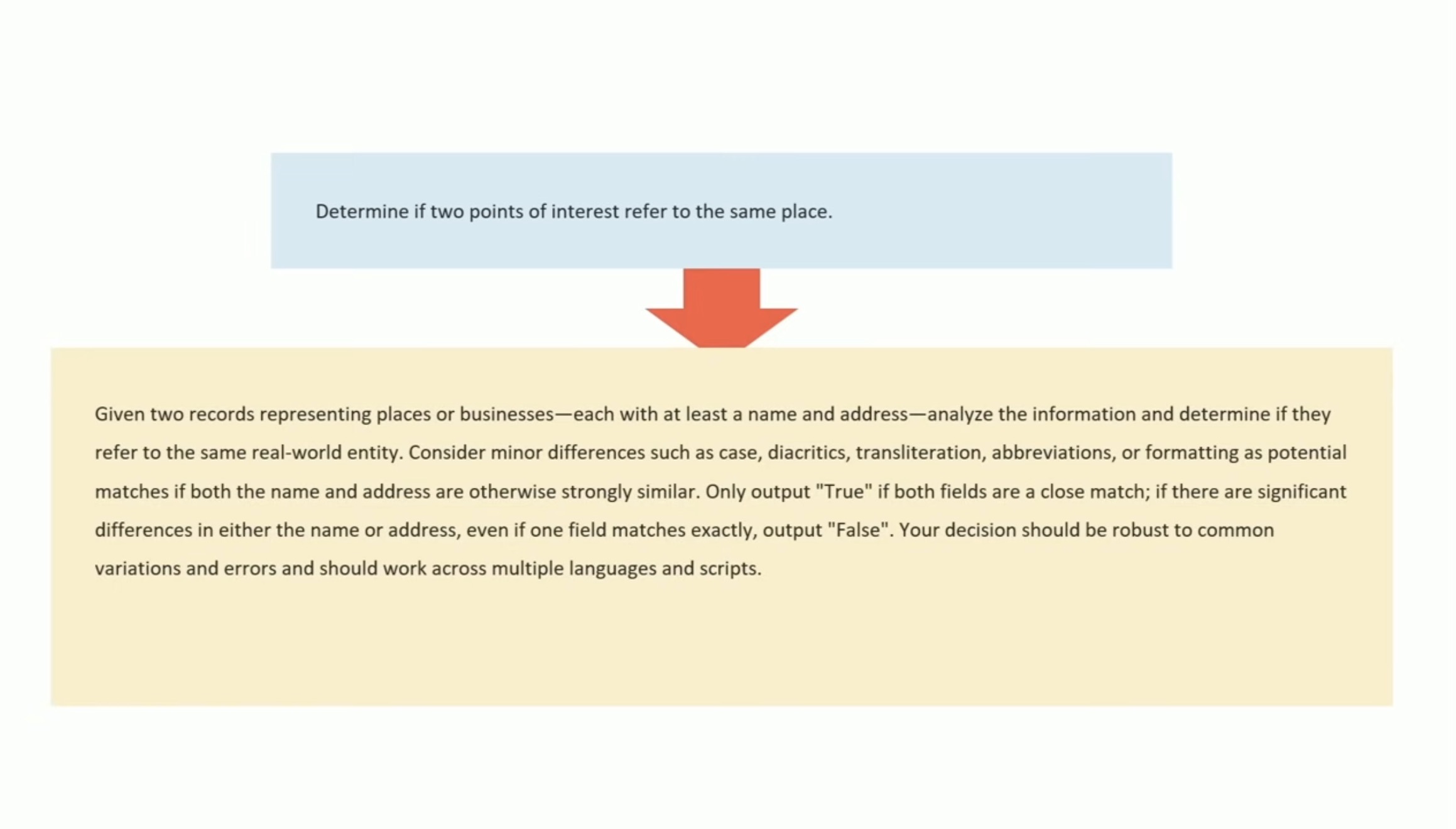📢 转载信息
原文链接:https://simonwillison.net/2025/Oct/4/dspy/#atom-everything
原文作者:Simon Willison’s Weblog
让大型语言模型(LLM)为你编写提示词:DSPy在复合AI管线中的应用简介
我过去曾对 DSPy 感到困惑。然而,Drew Breunig在最近的Databricks数据与AI峰会上做的这个半小时的演讲,是我迄今为止见过的对DSPy能解决哪些问题的最清晰解释。
您可以观看演讲视频:Let the LLM Write the Prompts: An Intro to DSPy in Compound Al Pipelines。
Drew 还提供了该演讲的书面版本。
地理信息数据融合的挑战与DSPy的应用
Drew目前在Overture Maps工作,该项目旨在整合来自多个提供商的兴趣点(POI)数据,以创建一个统一的POI数据库。这是一个典型的数据融合(conflation)案例,在地理信息系统(GIS)领域,这是一个臭名昭著的难题,涉及到对多个数据集进行去重和合并。
Drew 使用了一个成本较低的本地模型——Qwen3-0.6B,来比较7000万个地址,以识别匹配项。例如,他需要判断以下两条记录是否指向同一个地点:
Place(address="3359 FOOTHILL BLVD", name="RESTAURANT LOS ARCOS")Place(address="3359 FOOTHILL BLVD", name="Los Arcos Taqueria"')
DSPy如何实现提示词优化
DSPy 在这个场景中的作用,就是优化用于该小型模型的提示词。Drew使用了GPT-4.1和dspy.MIPROv2优化器,最终生成了一个700个Token的优化提示词,使匹配得分从60.7%提升到了82%。

优化带来的长期价值
为什么要做这些工作呢?Drew指出,拥有一个提示词优化管线后,未来如果出现了得分更高的其他模型,可以非常方便地进行评估和切换,而无需手动进行反复试验和调整提示词的过程。
🚀 想要体验更好更全面的AI调用?
欢迎使用青云聚合API,约为官网价格的十分之一,支持300+全球最新模型,以及全球各种生图生视频模型,无需翻墙高速稳定,小白也可以简单操作。
青云聚合API官网https://api.qingyuntop.top
支持全球最新300+模型:https://api.qingyuntop.top/pricing
详细的调用教程及文档:https://api.qingyuntop.top/about



评论区